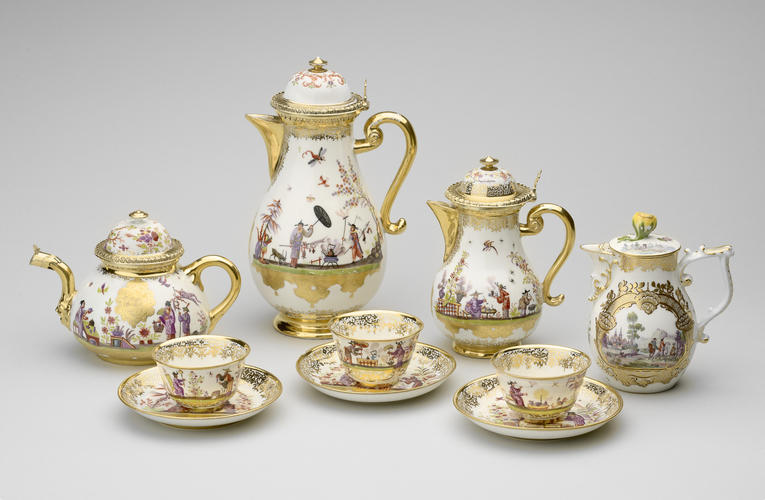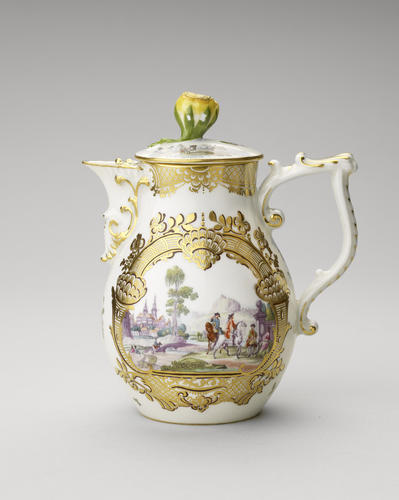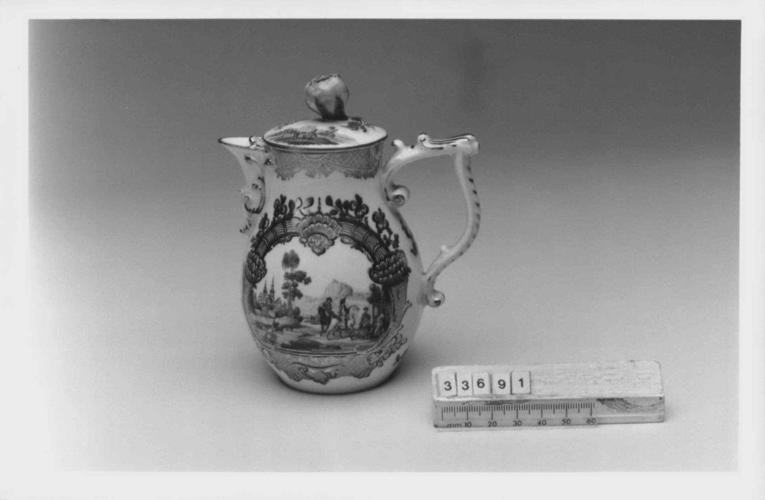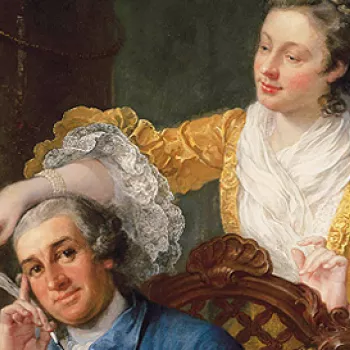Hot-water jug c. 1760
14.0 cm (whole object) | RCIN 33691

Chelsea Porcelain Works [London] (c. 1745-69)
Teapot c. 1760

Chelsea Porcelain Works [London] (c. 1745-69)
Hot-water jug c. 1760



-
An unusual Chelsea copy of a Meissen porcelain hot-water jug and cover, reproducing the landscape scenes, views of towns and palaces, trellis cartouches and gold dentil borders of the Meissen hot-water jug, RCIN 33690.
Text adapted from The First Georgians; Art and Monarchy 1714 - 1760, London, 2014
The chief financier of the Chelsea porcelain factory in the late 1740s was Sir Everard Fawkener (1695-1758), secretary to William, Duke of Cumberland, and a friend of the English ambassador to the Saxon Court, Sir Charles Hanbury-Williams (1708-59). In 1742 Fawkener wrote to Hanbury-Williams in Dresden asking him to send home samples of the porcelain wares being created in Meissen so that they might be studied at the Chelsea factory. Instead Sir Charles offered the manufactory free access to his collections at Holland House. Much of the output of the Chelsea factory during the 1740s seems to have been based on or inspired by Meissen, and in some cases, as with this jug, it is almost impossible to tell the two apart. This is why Chelsea’s director, Sprimont, petitioned parliament in 1752 to protect his business from foreign imports.
The clientele for Chelsea porcelain was at the highest end of the market. In later life Mrs Papendiek, dresser to Queen Charlotte, recorded that when she first set up home she could only furnish her house with ‘a tea and coffee set of Common India [Chinese] china… there was nothing superior, Chelsea porcelain and fine India china being only for the wealthy’.Provenance
First recorded in the Royal Collection in 1872.
-
Creator(s)
(porcelain manufacturer) -
Medium and techniques
Measurements
14.0 cm (whole object)
Category
Object type(s)








